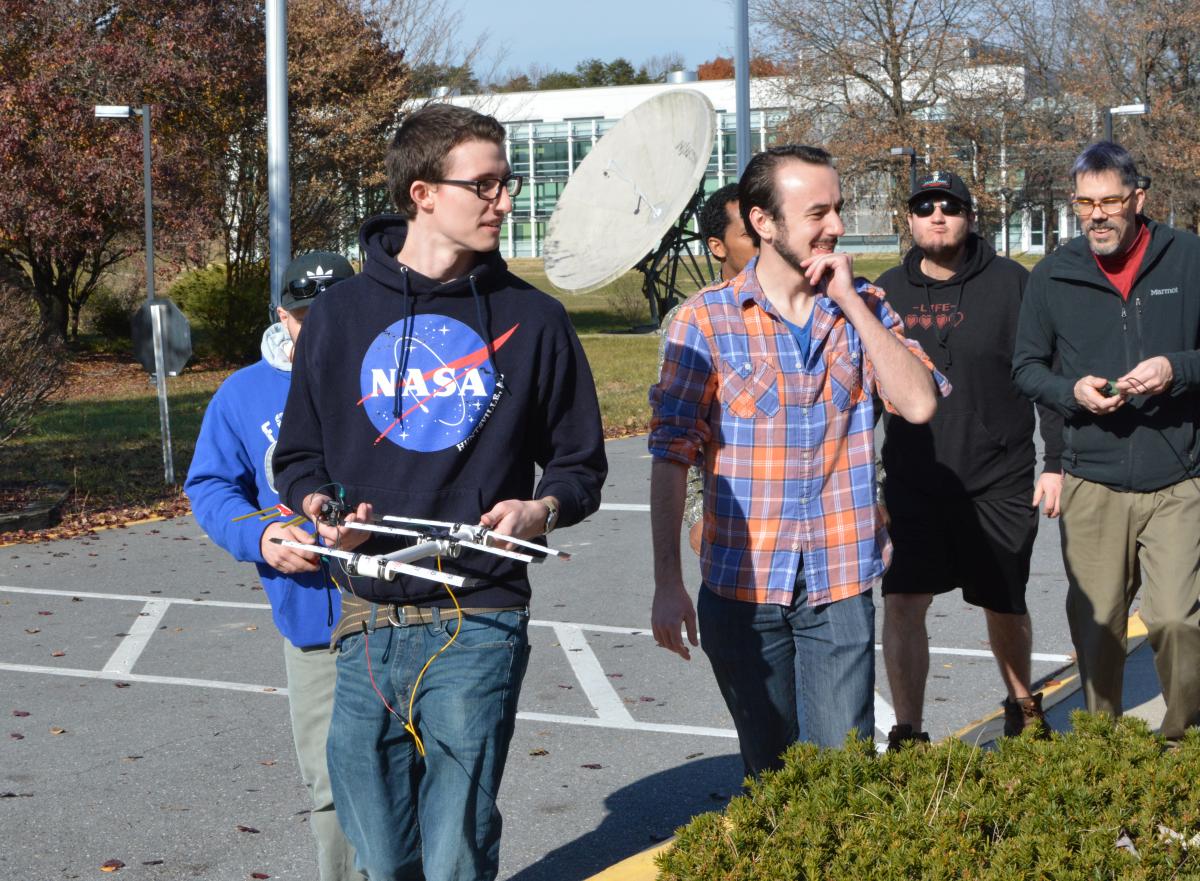Hamming Around at Capitol
April 6, 2018One student separates from the group to walk around the hill, causing the others yell out. "Did you lose signal?" The answer is yes, so they quickly rejoin. "It has to be on the north side of Campus", they agree, and begin walking with strange dowsing-rod like tubes of metal in their hands. In less than an hour, they succeed.
Are these just students with cell phones looking for 4 bars so they can text? Not quite-- instead, a 60-year old American hobby has become revitalized through active students exploring radio communications.
In an era when we suspect most millennials don't exactly care what a radio station is, Capitol is experiencing a resurgence of amateur radio licenses (or 'Ham' licenses) and its related amateur satellite (AMSAT) usage. This is the art and science of using off-the-shelf radio gear to communicate worldwide with other radio amateurs, not via internet or digitally, but through basic principles like power, antenna size, and a fair dose of understanding just how radio waves work.
Capitol has started up radio/wireless activities -- students Sean Dabbs and J.C. Culp re-started the Capitol Amateur Radio Club (CARC), AE students are tasked with a 'fox hunt' to search for a hidden transmitter, student pairs tackle r/c car races where each car's control radio interferes with the others. Ham radio is partially integrated into the EE & AE curriculum. In AE-455/Satellite Comm, taking the FCC amateur license is an option as an opt-out replacement for one of the required exams. But the real motives behind active amateur radio are skill building -- and job hunting.
|
Capitol call signs: CARC KB3KJI, Robert Herschbach KB4ZGU, Sandy Antunes KB3VNB, Alex Petrov KC3FDV, Aaron Bush KL2XF, Carl Hansen KC3BXO, James Culp KC3FSG, Electra Sherlock KC3DNO, Zach Richard KB3TXV, Keegan Moore KB3TXQ, Ryan Schrenk KC3JNH, David Mileto KB3KHS, Igor Vegner KC3HIC, Victor Chaves KC3HIB, Gabriel Piazzalunga KC3HHU, Neil Caulfield KC3GMK, Sean Dabbs KC3HPK, Joshua Hernandez KC3JTY, Mark Horvath KD2ODG, Chris Murray KC3KJH, Sofoniyas Demelashe KC3KLP, Jacob Gregory KC3KJP, Ralph Stormer KC3KBL. For more info on amateur radio, visit ARRL |
Call it applied electronics or analog hacking, it's an area where students learn a little physics and a lot of applied 'getting it to work'-- and an area that has surprising career opportunities. "If a student lists their call sign on their resume, they're getting at least an interview," said one hiring manager at Capitol's Career Fair. Corporate visitors to the Fusion Lab show surprise at Capitol's list of students with call signs -- a skill set and rating they thought was a lost art. Capitol even offers a little-known scholarship open only to student Hams.
The core FCC exam itself is 1/3rd basic second-semester Physics, 1/3rd common sense like 'don't fix an outdoor antenna during a thunderstorm', and 1/3rd jargon that you can study up on online. The Capitol library carries the ARRL (Amateur Radio Relay League) license test-prep books, and the exam is offered for free on the 3rd Saturday of the month by the Laurel Amateur Radio Club (LARC).
Once they earn their free license, students can talk world-wide with other amateurs, help rescue services in natural disasters, and connect with other Hams for fun and professionally. You can even talk to astronauts on the International Space Station. Capitol students are yet again in the forefront of hands-on learning through amateur radio, a 'lost art' that is more accessible than ever. All they have to do is be ready to step up to the radio.
By Dr. Alex "Sandy" Antunes, KB3VNB



